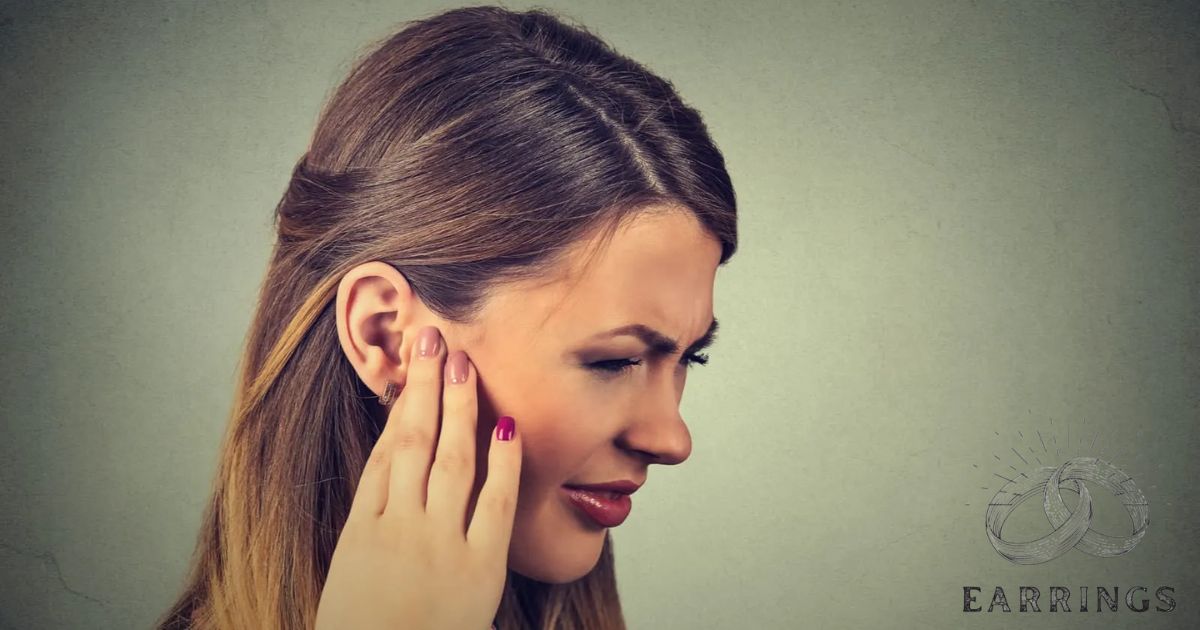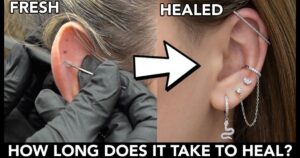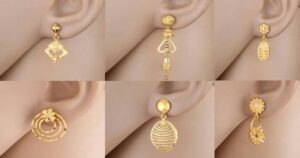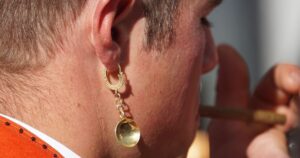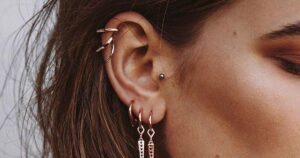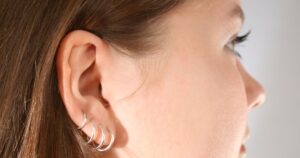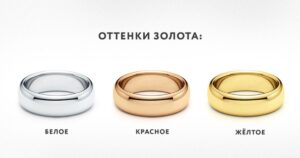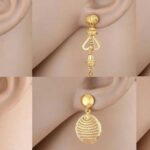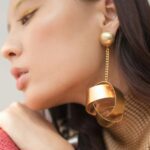The most painful involves ear piercing is diaphragm piercing involves puncturing the inner cartilage fold of the ear. The degree of pain varies. The proximity of nerve endings and thick cartilage can make it more painful. Pain levels can be subjective. Some people describe death piercings as more painful ear piercings.
Experience the piercing pain and exquisite beauty as you delve into the world of the most painful ear piercing. Each needle prick reveals a unique combination of agony and artistry. It turns the earlobe into a canvas of flexibility and style. Dare to endure, and wear your pain with pride.
Daith piercings are often considered one of the most painful ear piercings. Located deep within the cartilage folds of the ear near the ear canal. This procedure involves piercing a dense area of cartilage, which increases discomfort.
What Is Ear Lobe?
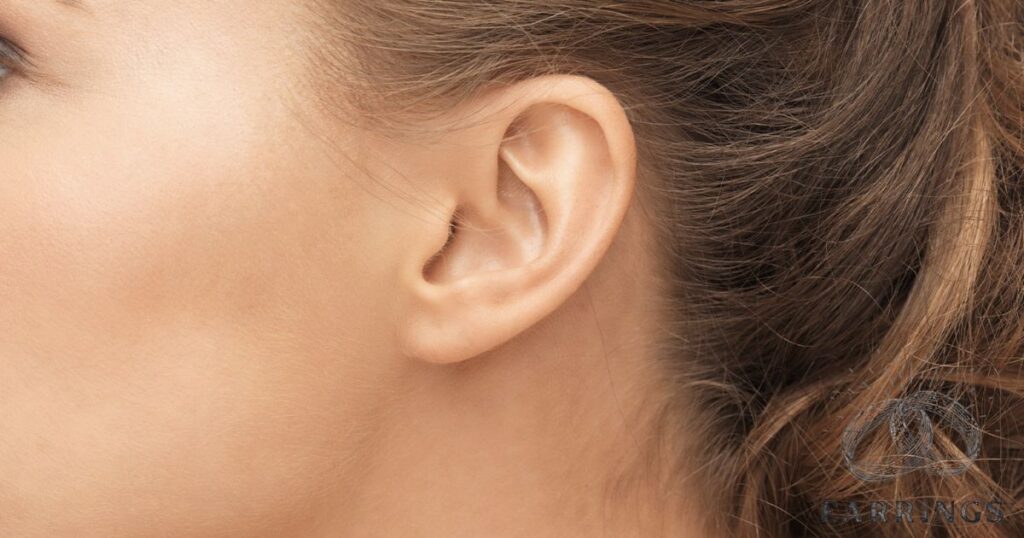
The earlobe is the soft, fleshy, lower part of the human ear that hangs down and is often adorned with jewels. Consists mainly of skin and fat. The earlobe lacks the cartilage found in the rest of the ear. This is a flexible and sensitive area, which serves as a common site for earlobe piercings. Stop Calling Bumps On Your Piercing Keloids.
The earlobe itself does not play an important role in hearing. It is primarily a cosmetic and cultural focal point. People may choose to pierce their earlobes for personal expression or cultural traditions. This practice is centuries old in different societies.
What Is Helix?

Helix is a term commonly used to describe a structure with a spiral or twisted shape. It is similar to a coiled spring or stair railing. In organisms, DNA molecules have a helical structure. It forms a double helix that is essential for storing and transmitting genetic information.
A helix can refer to a shape found in various objects and designs in nature. Arrangement of petals in some oysters or some flowers. The concept of helix is used in various fields. It includes mathematics, physics and architecture. Its unique form is used for both functional and aesthetic purposes.
What Is Daith Piercing?
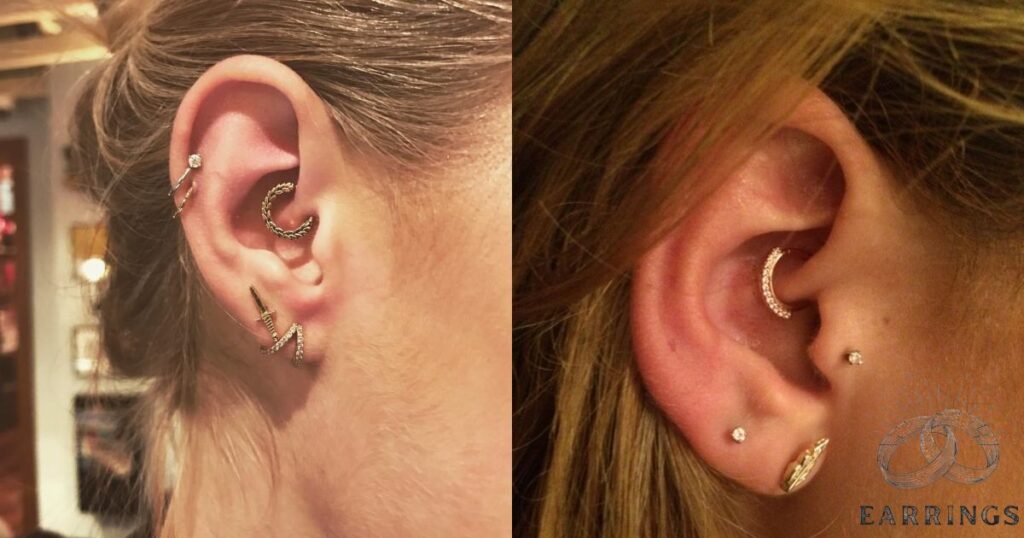
A daith piercing is a type of ear piercing that goes through the innermost cartilage fold of the ear. This is known as daith . This area is located just above the ear canal and below the roof. Create a unique and stylish look. Daith piercings have gained popularity not only because of their aesthetic appeal.
They are also believed to relieve certain types of headaches or migraines. Although scientific evidence supporting this claim is limited. The procedure involves a skilled piercer inserting a small needle into the cartilage to create a hole through which the jewelry is inserted. As with any piercing, proper care is essential to promote healing and prevent infection.
Vertical Tragus Piercing
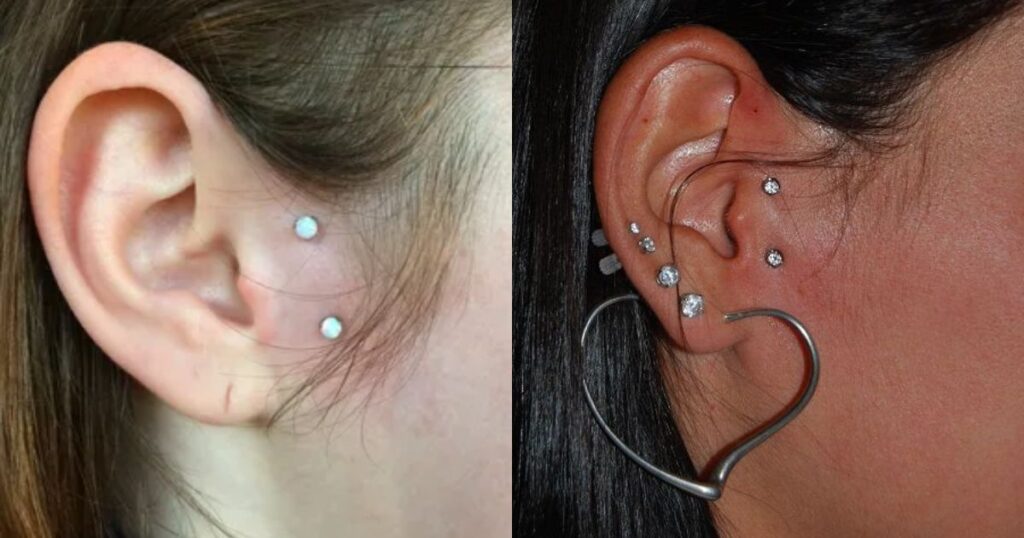
A vertical tragus piercing involves inserting jewelry through a small piece of cartilage located just above the entrance to the ear canal. This style involves a vertically oriented hole that usually has a barbell or a small curved bar.
The procedure is performed by a professional piercer using a sterile needle. The healing process may take a few weeks. Vertical tragus piercings are appreciated for their unique and sharp aesthetic. Regular cleaning and proper care are essential to reduce the risk of infection and promote a smooth healing experience.
Pain Factors in Ear Piercings
Sure, here are some common factors that can contribute to pain in ear piercings:
Technique
The skill and experience of the person performing the piercing can impact pain levels. A professional with proper technique may cause less discomfort.
Piercing Location
Some areas of the ear are more sensitive than others. Cartilage piercings tend to be more painful than lobe piercings.
Needle Size
The size of the piercing needle can affect pain. Smaller needles often cause less discomfort during the piercing process.
Jewelry Type
The type of jewelry used can impact pain during and after the piercing. Studs are generally less painful than hoops, and the material of the jewelry may also play a role.
Aftercare
Proper aftercare is crucial for minimizing pain and preventing infections. Following the recommended cleaning routine can help alleviate discomfort.
Individual Pain Tolerance
Pain perception varies among individuals. What might be painful for one person may not be as intense for another.
Infection or Irritation
If the piercing becomes infected or irritated, it can lead to increased pain. Keeping the piercing clean and avoiding touching it with dirty hands helps prevent these issues.
Pre-existing Conditions
Conditions like allergies or skin sensitivities can contribute to pain or complications during the healing process.
Remember, if you experience severe or prolonged pain, swelling, or signs of infection, it’s essential to consult with a healthcare professional or the piercer for appropriate guidance.
Most Painful Ear Piercing Experiences
Getting your ears pierced can be a memorable experience. For some people, it comes with unexpected pain. Many people make holes in the cartilage. Most painful. Diaphragm perforations in the innermost layer of the ear can be particularly severe due to the thickness of the cartilage.
Helix piercing that goes through the top edge of the ear. It hurts too. Pain is subjective and varies from person to person. These cartilage piercings are often described as more challenging than lobe piercings. Despite the initial sting, proper care and patience can help ensure a smooth healing process.
Aftercare for Painful Ear Piercings
Aftercare for a painful ear piercing is very important to ensure a smooth healing process and prevent infection. Start by cleaning the piercing area twice a day. A saline solution or antiseptic solution prescribed by your piercer.
Gently rotate the earrings while cleaning so they stick to the healing tissue. Avoid touching your ears with dirty hands. This avoids excessive twisting or bending of the earrings. It is important to resist the temptation to change earrings too soon. The initial healing period is over.
Avoid sleeping on the pierced ear to avoid irritation. If you experience persistent redness, swelling or discharge. Consult your piercer or a health care professional for guidance. With proper care, you’ll soon be enjoying your stylish ear piercing without discomfort.
Risks and Complications
The most painful ear piercings are usually considered daith or cartilage piercings. It comes with potential risks and complications. Due to the sensitivity of the cartilage, these holes can be more prone to infection and inflammation.
Improper hygiene can increase the risk of infection during the healing process. This leads to discomfort and possible complications. Cartilage piercings may be more susceptible to keloid formation. This is an increase in scar tissue.
It’s crucial to follow proper aftercare instructions, such as cleaning with a saline solution and avoiding unnecessary movement or pressure, to minimize the risks associated with these painful ear piercings. Seeking professional piercing services and adhering to recommended care practices can contribute to a smoother healing process and reduce the likelihood of complications.
Frequently Asked Questions
What is the most painful ear piercing?
The daith piercing is often considered one of the most painful ear piercings due to the thickness of the cartilage it passes through.
How long does the pain last after getting a rook piercing?
Pain after a rook piercing can persist for a few days to a week. However, individual experiences may vary.
Is it normal for a tragus piercing to hurt for an extended period?
Yes, initial pain and discomfort are common with tragus piercings, and it may take a few weeks for the soreness to subside.
What can be done to minimize pain during a helix piercing?
Using a numbing agent before the procedure and practicing proper aftercare can help minimize pain during and after a helix piercing.
Are industrial piercings more painful than other ear piercings?
Industrial piercings involve two cartilage areas connected by a single barbell, making them more intense than some other ear piercings, leading to increased perceived pain.
Conclusion
The most painful ear piercing experience varies from person to person. As pain tolerance varies among individuals. Factors such as the location of the piercing. The piercer’s skill and individual pain thresholds contribute to overall discomfort.
Some people may find cartilage piercings like daith or tragus more severe. Others may experience more sensitivity than a simple lobe piercing. It is important to prioritize proper aftercare and choose a reputable professional to alleviate the pain. Ensure a successful and comfortable piercing experience.
